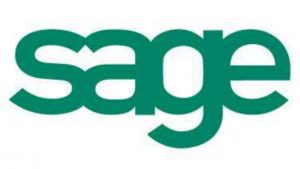

Sage will argue that it has achieved the 7% growth in the last two months of the year and is expecting to continue at that level. Back then, Hare was CFO and said: “We think we know how to fix this.” Hopefully it is resolved but it will be interesting to see how the markets react when they realise that Sage has underachieved.
Key figures for the financial summary include:
- Organic revenue, £1,819 million, up from £1,703 million.
- Subscription revenues £839 million, up 25.2 per cent from £670 million.
- Operating profit £427million up 22.7 per cent from £348 million.
- Strong free cash flow of £356 million.
That free cash flow will be boosted by the sale of Sage Payroll Solutions. This is a US based payroll outsourcing services business now deemed non-core. The question will be whether Sage look to acquire another cloud vendor or boost development at Sage Intacct and Sage People. It could speed up the internationalisation of the former and boost the global reach of the latter. Or, it could look to acquire another cloud software finance solution to further complement its portfolio of products.
Transitioning to Cloud
Hare is understandably bullish about the results and highlights that Sage Business Cloud ARR is now £434m, growing at 51%. The stars of that are Sage Intacct (in the US) and Sage People (Globally) which are growing at 30 per cent and 49 per cent respectively. Importantly, their renewal rates are also above 100%, meaning that customers are buying more each year.
Sage Financials (Sage Live) is growing at 89% but it is not clear what the base for this is and the Sage Intacct growth figure will be contributing significantly to the income in North America. The concern is Sage Accounting (Sage One) which grew at only 18%. This is poor in comparison to QuickBooks online and Xero, that are reporting significantly higher growth rates and are probably eating into Sage market share in the UK at least.
Hare called out success for Enterprise Management (Sage X3) in the US, with a growth rate of 25% and overall revenues have grown in that region by 12%. One suspects mainly due to Sage Intacct though. Sage Intacct revenues were also boosted by the launch of Sage Intacct budgeting and planning.
What next?
In a brief statement, Hare gave a flavour of where Sage will put it focus in 2019. He said: “Sage has shown stronger performance in the second half of FY18. The renewed focus on high-quality subscription and recurring revenue has generated momentum as we exited the year. As CEO I will put customers, colleagues and innovation at the heart of everything we do to accelerate the transition to becoming a great SaaS business. That means investing further resource in Sage Business Cloud, a continued commitment to customer success and a culture which values the individuals and promotes collaboration. Increased investment in these areas will lead to an acceleration in high-quality sustainable recurring revenue growth.”
That investment is around £60 million. It will see Sage Intacct internationalise, starting with UK&I and Australia. According to Sage Intacct, this is not due until Q3 2019 calendar year, that timescale may now be accelerated. In our opinion it should be.
It will also see further investment in Sage Business Cloud. This includes, according to the press release: “Enhancing the ‘service fabric’ of Sage Business Cloud to improve user experience, migration pathways, micro-services and connectivity of ecosystem.” It is those migration pathways that have been missing since it was first announced. Perhaps now we will see some substance behind the marketing brand that Sage Business Cloud was originally.
It will also invest in emerging technology. This should include Pegg, its bot and AI that it has invested heavily in but delivered little to products so far. Instead, investment seems to have been spent on delivering proof of concepts internally. This is not a bad thing, as it means that when it comes to delivering AI into client facing products, it will have understood the technology better.
What does this mean
Sage is still in transition. While it states it hopes to achieve recurring revenue growth of 8 – 9 per cent, there is a stark warning in the announcement. “As the business accelerates the pace of transition towards subscription, the organic revenue growth rate may decrease in the short-term.”
The question will be whether Sage can grow its cloud business fast enough. Both Zero and QuickBooks are eating into its SME market in the UK especially. It needs to find a counter to that. The mid-market is very competitive and Enterprise Management needs to find a niche that it can outperform its many rivals in.
Hare has a tough job. However, he is now making the right noises and the right investments, in products that are doing well. The remaining bugbear in the room is, what he does with the legacy products and how he convinces customers to move to cloud products and what he does with the remainder.


























